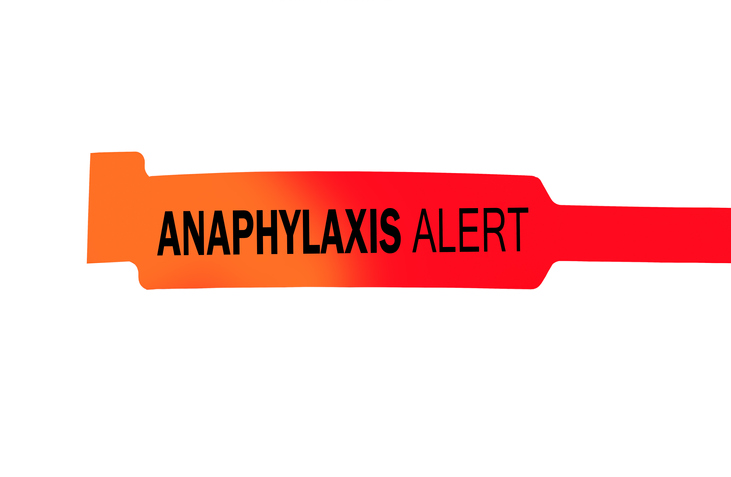Treatments
What Is Anaphylaxis?

Anaphylaxis is a severe, potentially life-threatening allergic reaction that requires immediate medical attention. During an anaphylactic reaction, the immune system floods the body with chemicals that create various symptoms, which may cause the body to go into shock. When this occurs, blood pressure drops dangerously low and airways narrow, which can disrupt or prevent breathing. Anaphylaxis requires emergency medical treatment.
Signs and symptoms
Anaphylaxis most often affects two or more body systems; signs and symptoms depend on the affected systems. They include, but are not limited to, the following:
- Wheezing or difficulty breathing
- Airway constriction
- Pain or tightness in the chest
- Swollen or itchy lips or tongue
- Weak, rapid pulse
- Low blood pressure
- Skin reactions, such as hives, itching, or flushed, clammy, or pale skin
- Nausea, vomiting or diarrhea
- Dizziness or fainting
- Confusion
- Loss of consciousness
Symptoms generally occur within minutes of exposure to an allergen. In some cases, the reaction can be delayed for hours. It is possible to have a second anaphylaxis reaction within 12 hours of the first.
Causes
Anaphylaxis occurs when antibodies in the immune system overreact to something that is typically harmless, such as certain foods. Potential triggers for anaphylactic reactions include the following:
- Certain foods (e.g., nuts, shellfish, milk, wheat, soy, or eggs)
- Certain medications (e.g., penicillin or aspirin)
- Insect stings or bites
- Pollen
- Latex
- Exercise or aerobic activity
In some cases, the trigger of anaphylaxis is unknown. This is referred to as idiopathic anaphylaxis.
Risk factors
Risk factors for developing anaphylaxis include the following:
- Previous anaphylactic reactions
- Allergies
- Asthma
- Eczema or atopic dermatitis
- Family history of anaphylaxis
- Other health conditions, such as heart disease or mastocytosis



















